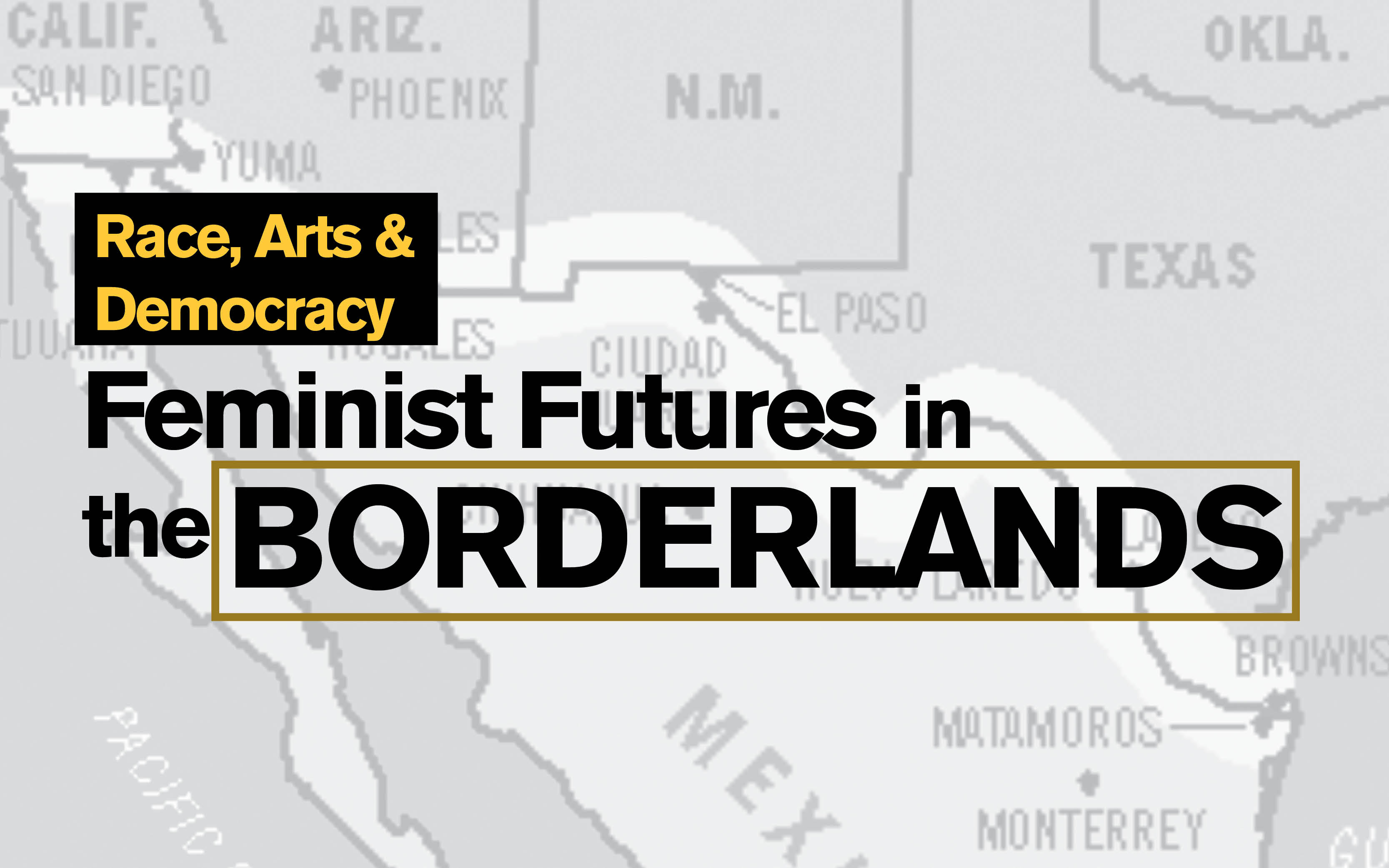6:00 p.m. - 7:30 p.m.
Virtual Zoom

Virtual Zoom

Virtual panel discussion about art, performance, gender, and borders. We feature five artists who have participated in the Binational Arts Residency to hear their perspectives on the possibilities for intersectional feminist futures in the borderlands.
Moderators:
|
Michelle Telléz, PhD |
Michelle Tellez has been committed to mapping projects of resistance, exploring shared human experiences and advancing social justice for the last 25-years. As an interdisciplinary scholar, she writes about transnational community formations (and disruptions), Chicana mothering, and gendered migration. |
| Casandra Hernandez Faham |
Casandra Hernández Faham is a passionate advocate for Latinx and indigenous arts and culture, with expertise on binational cultural histories and artistic practices of the US-Mexico borderlands. A native of Hermosillo, Sonora, Casandra is a Program Associate in the Arts and Culture program at The Andrew W. Mellon Foundation. Prior to joining the Foundation, she served as executive director of CALA Alliance (Celebración Artística de las Américas), a multidisciplinary Latinx arts organization that organizes creative collaborations with artists in Arizona, Mexico and Latin America. |
|
Ana Maria Alvarez |
Ana Maria Alvarez is an award-winning dancer, choreographer, teaching artist and founder director of CONTRA-TIEMPO Urban Dance Latin Theater. Inspired by her upbringing as a Cuban American, her work boldly traverses the world of social dance, political activism, community organizing and art making. She has studied with master artists Katherine Dunham, Idalberto Bandera Sidó (Ballet Folklórico Cutumba, Santiago de Cuba), Jawole Willa Jo Zollar (Urban Bush Women, NY), Ann Cooper Albright, Julio Jean and Dr. Eleanor Gwynn. |
|
Ana Teresa Fernández |
Ana Teresa Fernandez’s work addresses issues of gender, feminism and borders. “The most apparent thing in my work is that it deals with gender and inequalities between male and female,” says painter, video, and performance artist Ana Teresa Fernandez. Her social sculptures, which combine elements of performance and sculptural practice, include the re-enactment of gendered labor in order to call attention to issues of class and sex. Fernandez’s “Entre” painting series is based on documentary photographs of her 2012 performance Borrando la Frontera ("erasing the border”), in which she painted a section of the San Diego-Tijuana border wall, making it appear as though it had disappeared. |
|
Carolina Aranibar-Fernández |
Carolina is a Bolivian-born artist who earned her BFA from the Kansas City Art Institute and her MFA from the Virginia Commonwealth University, culminating in a Faculty Research Grant and a travel Fellowship in Qatar. Her practice rigorously traces flows of capital–cartography, maritime trade, cash crops, and industrial metals– across bodies-of-water from the perspectives of the native, gendered, and racialized bodies that move it. That is, she re-embodies capital exposing how contemporary markets insidiously hide historical oppression. Imperialism to colonialism, and now capitalism.
|
|
Yadira De La Riva |
Yadira De La Riva graduated from NYU in 2010 with One Journey, a solo performance on border identity that created opportunities for her to tour theaters, colleges and community centers nationwide. These experiences of performing in many different physical spaces and for diverse audiences taught her about versatility and the value of connecting with people of all walks of life. |
|
Mary Jenea Sanchez |
Through drawing, video, installation, performance and photography Mary Jenea Sanchez renders and illustrates contemporary life in the Southwest with a feminist perspective atop a fence that bisects one culture. “As a person I am aware of my cultural categorization, neither as native Mexicana nor Americana. As an artist, I strive to utilize this nomadic sensibility, by inserting myself between, among, and outside of the status quo of American and Mexican culture. As the sociopolitical climate of the border region remains controversial, I continue the conversation of permeability and how the perception of the actual line of the border can be reimagined.” |
ASU Center for the Study of Race and Democracy
ASU Museum Art
Performance in the Borderlands
Cala Alliance
Mexican American Studies U of A